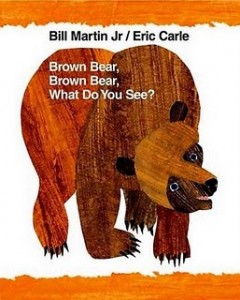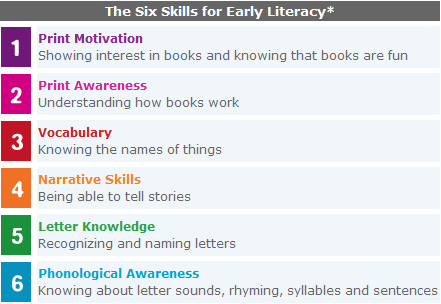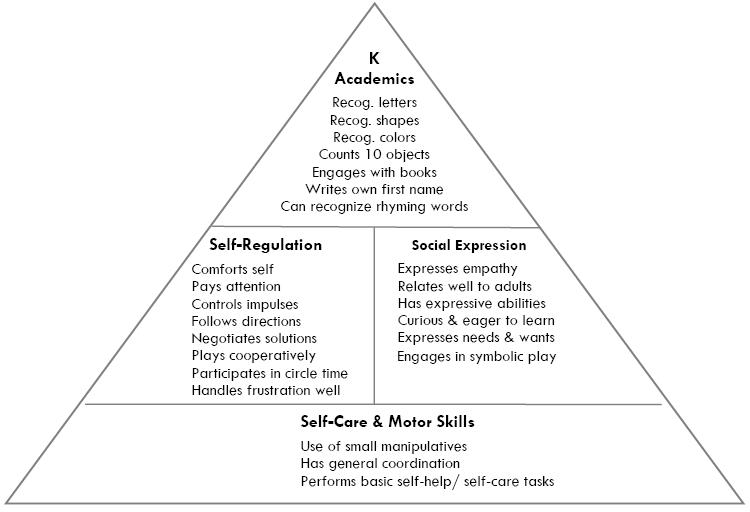Early Literacy Spotlight: Phonemic Awareness
Monday, July 11th, 2011
Learning by Sound
What is phonemic awareness and why is it important?
Phonemic awareness is the ability to hear individual parts of words, be able to separate the parts, put the parts back together and change the parts to make new words (Adams, 1990). This early literacy skill usually developed by the end of first grade, is a strong indicator of reading success in young children and kindergarten readiness. Phonemic awareness can be introduced to young children through reading rhyming books, singing songs, and chanting nursery rhymes.
When a child has developed phonemic awareness, he or she is able to enjoy language and play with its sounds. Children will understand the language we speak can be divided into individual words that can break into syllables (parts/chunks). Children will also be able to identify the beginning, middle and ending sounds in words and match words with the same beginning sound.
Here are some suggested books for developing phonemic awareness (this is not a complete list):
Rhyming Books
- Chicka, Chicka Boom Boom by John Archambault
- Duck in the Truck by Jez Alborough
- A Giraffe and a Half by Shel Silverstein
- Is Your Mama a Llama by Deborah Guarino
Alliteration Books
- Dr. Seuss’s ABC by Dr. Seuss
- K is for Kissing a Cool Kangaroo by Giles Andreae
- Some Smug Slug by Pamela Duncan Edwards
Playing With Sound Books
- The Hungry Thingby Jan Slepian
- If I had a Paka by Charlotte Pomerantz
- Oodles of Noodles by Lucia Hymes
Alphabet Books
- A is for Salad by Mike Lester
- Albert’s Alphabet by Leslie Tyron
- Eating the Alphabet: Fruits and Vegetables from A to Z by Lois Ehlert
- Tomorrow’s Alphabet by George Shannon
Songs/Poetry
- The Eensy-Weensy Spider by Mary Ann Hoberman
- Hush, Little Baby by Margot Zemach
- Twinkle, Twinkle, Little Star by Iza Trapani
What you can do at home to strengthen your child’s phonemic awareness:
Parents can participate in the development of their children’s phonemic awareness by turning everyday activities into teachable moments. The activities listed below are intended to be done orally and for short periods of time (5-7 min.) repeatedly throughout the day (in the car, in the bath, waiting in line or for a bus, etc.)
Rhyming Activities
Children are naturally drawn to rhyming words. Parents can incorporate rhyming activities by reading aloud books that play with language. Visit your local library for Dr. Seuss books, which are an excellent resource to help children develop phonemic awareness.
Try these activities at home to reinforce your child’s concept of rhyme:
- Give your child a word and then generate a list of rhyming words together (log, frog, dog, hog, etc.)
- Read and teach your child nursery rhymes
Syllable Manipulation
Activities that encourage children to manipulate syllables are generally easy for most parents and children to engage in. A syllable, quite simply, is a word part. Young children often don’t know or understand the term syllable, but they are able to hear the parts of words. The most common methods of manipulating syllables include clapping, tapping fingers, and snapping fingers.
Try these activities at home to reinforce your child’s concept of syllables:
- Clap the syllables of names of people in the family, places the family has visited, food in the kitchen, toys in the toy box, or friends at school. For example, as the family passes in front of a library, the parent might say, “Look a library. Let’s clap to see how many syllables are in library.” The parent and child could then clap their hands to each syllable in the word library.
- Place a few common objects into a bag. Ask your child to pull one of the objects out of the bag and then clap or pronounce the name of the object segmented into syllables (e.g., dic-tion-ar-y, ap-ple, un-der-wear).
Phoneme Blending, Segmentation, and Manipulation
Activities that involve phoneme manipulation deal with the individual sounds of words. A phoneme is a sound made by an individual letter. Manipulating the phoneme means working with the sounds in words in a concrete way. Again, the most common ways to manipulate individual sounds include clapping, tapping, or snapping fingers. The activity may be focused on a beginning, ending, or middle sound, of a word. It is important for your child to be able to segment words into their individual sounds, blend sounds into whole word, and change sounds to make new words.
Below are some common, yet confusing, terms when discussing the sounds (phonemes) in words.
- Isolation: Say the first, middle or last part of the word.
- Deletion: Say the word “cat” without the first part: at.
- Addition: Say the word you have when you add the sound /s/ to the word top: /s/top.
- Categorization: Say the word that does not belong in this group of words: pig, pack, top, put.
- Segmentation: Say how many parts are in the word lunch.
The following activities can help you practice this at home:
- An excellent activity parents can engage in with their children is a scavenger hunt. The parent and child can hunt around the house, at the store, in the yard, at the park, in the car, etc., for things that begin with the same sound as the child’s name, or some other sound.
- Make up sentences together with the stipulation that every major word has to have the same beginning sound (Seven silly snails sat slowly on the sand.)
***
This blog post has been adapted from the article What is Phonemic Awareness
 (http://www
(http://www (http://www
(http://www (http://www
(http://www (http://www
(http://www